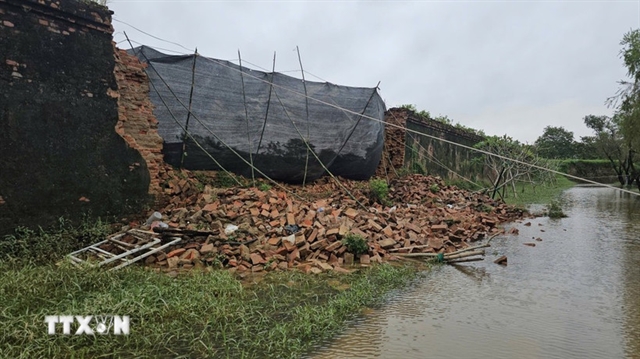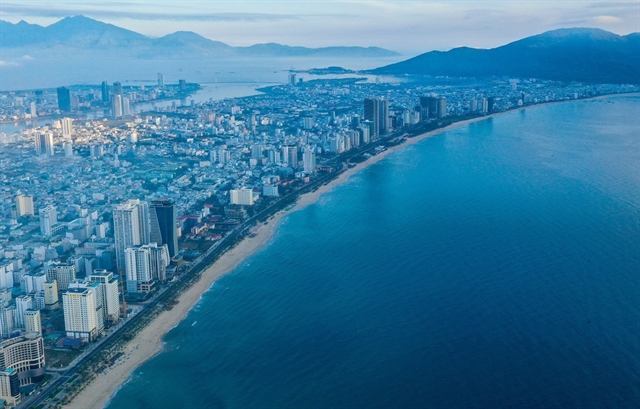 Society
Society


|
| Mỹ Khê beach in the central city of Đà Nẵng. — VNA/VNS Photo Trần Lên Lâm |
ĐÀ NẴNG — Recently approved adjustments to the master plan for central Đà Nẵng City are thought to be about to open the door for it to map out its vision for the future.
Under the adjustments, the city aims to become a major socio-economic centre of Việt Nam and Southeast Asia, a hub for entrepreneurship, innovation, tourism, commerce, finance, logistics, high-technology, IT, and supporting industries, a centre for culture-sports, high-quality education and healthcare, and science and technology, and a destination for regional and international events.
It also hopes to become an international seaport city, acting as a core in the urban chain and a growth pole of the key economic zone in the central and Central Highlands regions, in tandem with promoting its stature as an ecological, modern, smart, and liveable city, which will help it ensure national defence and security and Việt Nam’s sovereignty over its sea and islands.
Đà Nẵng will be divided into 12 sub-areas: the western ecological sub-area, the eastern ecological sub-area, the Hàn riverside and eastern coast sub-area, the Đà Nẵng Bay sub-area, the Liên Chiểu Seaport sub-area, the high-tech sub-area, the green core centre sub-area, the innovation sub-area, the airport sub-area, the hillside urban sub-area, the high-tech agriculture sub-area, and the development reserve sub-area.
It is forecasted that, by 2030, Đà Nẵng’s population will stand at about 1.79 million, up from the current 1.134 million.
The city will adjust its single-centre urban structure (Thanh Khê and Hải Châu districts) into multi-polar development areas.
It will set up two “economic belts”, with the northern part focusing on high-tech industry and seaport-logistics and the southern part on innovation and high-tech agriculture.
There will be four priority job creation clusters: a high-tech industrial cluster, a seaport and logistics cluster, a high-tech agricultural cluster, and an innovation cluster.
According to Ngô Viết Nam Sơn, a member of the Prime Minister’s Economic Advisory Group, this is a new phase for Đà Nẵng in terms of planning.
He said the city will develop areas with special functions, such as a high-tech zone attached to the Liên Chiểu Port urban area and innovative urban areas associated with universities, towards turning Đà Nẵng into a multi-centre city.
Logistics and seaport development will help it become a regional centre with greater potential than it has now, Sơn said.
However, this is only a master plan, he noted, and it is necessary to adopt detailed plans for the city’s future development.
As soon as the adjustments to Đà Nẵng’s master plan were approved in March this year, 11 domestic and foreign investors expressed a desire to set up research and investment projects in many areas of the city.
Chairwoman of BRG Group, one of the 11 investors, Nguyễn Thị Nga said the city is an especially important investment destination for the group.
It has invested in high-end resorts in the city, she noted, adding that these adjustments will give investors a clear and consistent orientation, creating more favourable conditions for business development and the city’s development overall.
“I believe with the effort and determination of local leaders, people, and businesses, Đà Nẵng will become a major socio-economic centre of the country and the region,” Nga said.
The BRG Group has proposed studying a master plan for the development of the southern area of Hòa Vang District.
According to Chairman of the municipal People’s Committee Lê Trung Chinh, with these adjustments, Đà Nẵng will overcome its limitations, effectively utilise its urban areas and offer solutions to environmental and population issues.
It will continue to improve its competitiveness, promote administrative reforms, and remove difficulties facing people and businesses, Chinh said. — VNS




